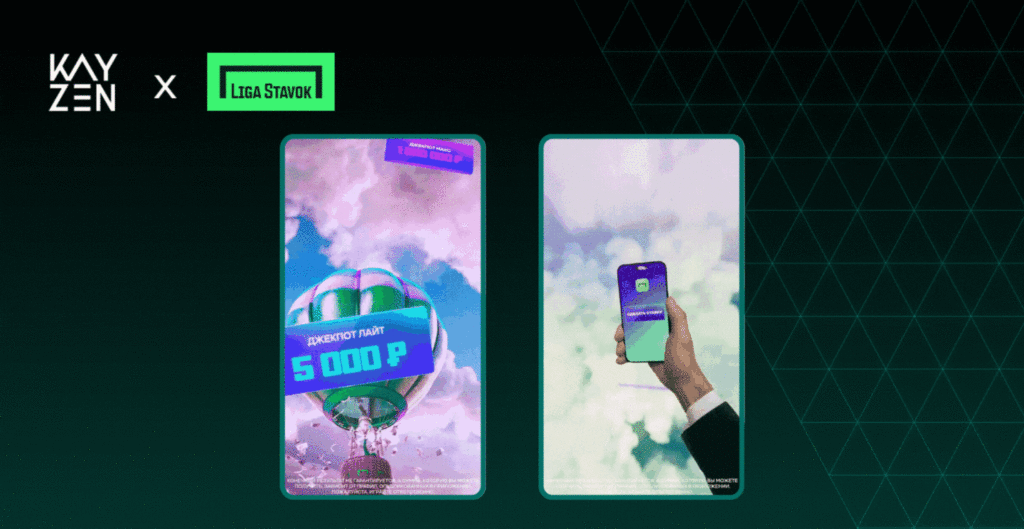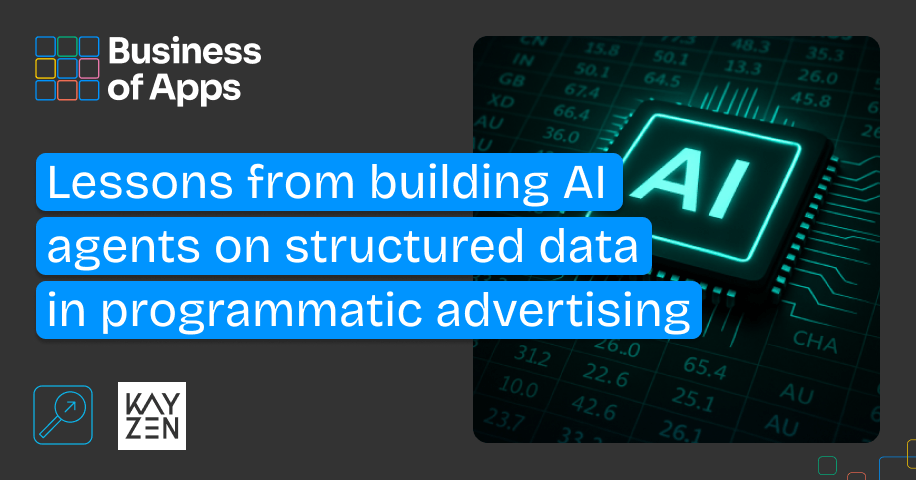This article is part 2 of a series on app-to-app Retargeting. The first article is available here and addresses WHY advertisers should reconsider their vendor selection. The following article focuses on HOW advertisers should approach retargeting and avoid common missteps.
App-to-App Retargeting is an area ripe for disruption. The sector is still dominated by ad tech vendors with undisclosed (and typically very high) margins, but the key success factors do not sit with vendors. Whether they know it or not, advertisers have everything they need to run successful Retargeting campaigns in-house. Having a vendor with transparent prices who will help you get the most out of your first-party data is key.
That doesn’t mean that running successful Retargeting campaigns is easy. There are many different potential strategies, and each one carries its own set of challenges and considerations. But sophisticated marketers can do it and have all of the tools needed to do so. If you are ready to embark on this important step, here are three main questions to ask yourself when considering how to run your own Retargeting campaigns.
Question 1: What am I trying to accomplish?
While the list below is not exhaustive, it captures most of the objectives of Retargeting campaigns.
Bringing back lapsed users or payers. This means targeting recently lapsed users and incentivizing or reminding them to come back. It is a very common strategy in the gaming vertical and typically represents an effort to catch valuable users and earn more revenue before they drop out of the lifecycle entirely.
Activating new users. Most app marketers know that most of their new users drop off within the first week, and most of this loss happens in the first 2-3 days. Therefore, bringing new installs into a revenue-generating lifecycle in the first 48-72 hours is crucial. Something as simple as a message reminding users to complete a registration can improve long-term retention and LTV.
Converting players to payers. A staple for the in-app purchase driven app. Many games have no source of revenue besides IAP (or typically very very little), which means that you will hardly earn anything from the broad majority of your users. Convincing just a tiny fraction of additional users to pay for IAP can be the defining line between a successful and unsuccessful game.
General engagement. Apps that can monetize a broad base of their users (typically through in-app advertising) get paid more when their existing users are better engaged. Therefore, a strategy of targeting all active users to keep them active can be ROI-positive. Rather than driving a specific in-app event, the goal is increasing DAU.
Upselling. For apps with a catalog of different products, upselling or cross-selling is fundamental to drive long-term LTV. Targeting your new buyers with other products they might enjoy can aid in this strategy. Converting a Trial user to a monthly Subscriber would also fall in this category.
Question 2: How do I ensure apples to apples comparisons across my media spend?
This seems simple in concept but is often difficult in practice. Too often, decisions made for a specific campaign have detrimental impact when comparing one campaign with one vendor to another campaign with another vendor. If you only ever have one Retargeting campaign going at a time, it’s not necessarily important, but it will inhibit your ability to compare multiple campaigns and allocate spend to the best performing ones. Here are a few known issues that can impact campaign comparison.
Make sure attribution logic is consistent. Some Retargeting vendors require View-Through Attribution, and some do not. Whether you use View-Through or Click-Through attribution or both, make sure you are consistent across campaigns and vendors.
The same is true with the attribution lookback windows. Here, you may encounter differences across MMPs. For example, with Adjust, if a given user is attributed to a Retargeting campaign, all future purchases of that user will forever be attributed to the Retargeting campaign. If that user was acquired previously through a User-Acquisition campaign, then their future purchases will no longer be attributed to UA. This could mean that long-term LTV calculations for UA with Adjust are reduced in the presence of Retargeting campaigns.
If you were using AppsFlyer, on the other hand, then that same user’s future purchases would be attributed to both UA and Retargeting, but AppsFlyer will include a data parameter to separate UA and Retargeting attribution.

Understanding these differences can have a big impact on LTV calculations for UA and Retargeting. While there isn’t a right or wrong answer, it is important to understand how attribution windows work and try to maintain consistency across the board.
Ensure consistent segmentation for your Retargeting audience. If you target 7-day lapsed users on one network and 14-day lapsed users on another, you will not be able to compare results.
Be aware of when you use historical audiences and ensure consistency. Many Retargeting audiences are created by sending real-time postbacks of all installs and in-app events to a vendor. A vendor that has been running for a couple months will have more historical users to target because postbacks were switched on previously, whereas a new Retargeting vendor will only be targeting users from recent postbacks. A wider audience with the first vendor would typically mean higher conversions and better results.
Having a cutoff period where you no longer target lapsed users (for example, after being lapsed for 30 or 60 days) will help smooth things out over the long run.

If you can avoid this by sending historical data to a vendor, do so. If not, at least be aware of this and allow for enough time for the new vendor to “catch up” with others.
Question 3: How should I segment my users?
The right segmentation tactics ultimately depend on your use case strategy. While the specifics should be developed case by case and are not consistent for all apps and advertisers, there are a couple rules of thumb to keep in mind when developing your segmentation.
Distinguish between Lapsed Users and Churned Users
If your goal is to bring back lapsed users, try to identify the sweet spot between lapsed users and churned users. Lapsed users are users who recently stopped using your app. Targeting users too early means wasting media spend on users who haven’t actually left. Many apps define lapsed users at 7 days with no activity, but the correct definition highly depends on the nature of your app. In some cases, such as hardcore strategy games, going even a few hours without playing may mean that a user has fallen behind in gameplay and should be reengaged. While 7-days is a good benchmark to start with, an advertiser should ask themselves what makes the most sense for their strategy and then A/B test different timeframes to identify the optimal one.
Churned users, on the other hand, are likely gone forever. There is a temptation for new Retargeting advertisers to target their entire non-active user base going back several years, thinking that a broad campaign will surely generate lots of reengaged users. This should be avoided, as the likelihood of converting someone who hasn’t played for a long time is far too small to be cost-effective. Again, it depends on the nature of the app, but 30 or 60-day cutoffs are common.
Additionally, the LTV of your users should be considered when attempting to define the cutoff point for churned users. For a high-LTV game, it may actually be effective to target 90-day lapsed users – not because they’re more likely to convert, but because they generate so much revenue when they do that it is worthwhile.

Another scenario to illustrate different approaches is Upselling. With this objective, the goal is not to bring back lapsed users, but rather to generate more revenue from your best users. In this case, it would likely be better to target active users who have just made their first purchase with an offer for a different product. Or perhaps your goal is to activate new users. In this case, you may want to target all new installs regardless of engagement with a follow on reminder advert to complete their registration or purchase a subscription.
The takeaway: the right segmentation depends on your strategy. When re-engaging lapsed users, think critically and test to identify the right definition of “lapsed.” Factor in your app LTV when defining churned. That will help you identify the sweet spot for bringing users back before they disappear entirely.
To wrap up our series on Retargeting, the ad tech tax for mobile marketing is still a black box for most vendors and advertisers, but Retargeting specifically seems unjustifiably high. The key drivers of success sit with advertisers and their first-party data . The “take rates” of public companies like Criteo are as high as 40%. Our intelligence in the market success middleman fees for in-app Retargeting are often even higher.
At Kayzen, we believe this is fundamentally unsustainable for the market and are on a mission to change things. With transparent, predictable pricing that is far lower than the margins charged by others, we help advertisers save up to 50% of their Retargeting media spend and reduce middleman fees by as much as 80%. Just see for yourself with our new Pricing Calculator. With a little due diligence and critical thinking on the part of advertisers combined with a fair and transparent solution like ours, we hope to usher in a world where undisclosed margins and black box campaigns are a thing of the past.



